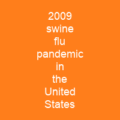The Global Pandemic Threat of H5N1: A Silent Killer in Birds and Beyond
Imagine a silent killer stalking the globe, its presence felt through millions of bird deaths and countless lives lost. This is the reality of H5N1 influenza, a virus that has spread like wildfire across continents, posing a significant threat to both avian life and human health.
The Genesis of H5N1: A Deadly Strain Emerges in China
Was it fate or mere coincidence that the first signs of this deadly strain appeared in Guangdong Province, China, back in 1996? The virus quickly spread through live-poultry markets, jumping from birds to humans and causing some fatalities. This marked the beginning of a global nightmare.
The Spread Westward: A Virus on the Move
H5N1 influenza didn’t stop at China’s borders; it continued its westward journey, infecting countries across Asia, Europe, and Africa. How did this virus manage to travel so far and wide? The answer lies in its ability to mutate rapidly, making it a formidable adversary.
The Human Toll: A Grim Reality
According to the World Health Organization (WHO), there have been 948 confirmed cases of H5N1 influenza between 2003 and November 2024, resulting in 464 deaths. However, this number may be lower due to unreported mild cases. Can we truly grasp the full extent of its impact?
A Global Outbreak: From Asia to Europe and Beyond
The list of countries affected by H5N1 is staggering. From South Korea, Vietnam, Japan, Thailand, Cambodia, Laos, Indonesia, China, Malaysia, Russia, Kazakhstan, Mongolia, Turkey, Romania, Croatia, Ukraine, Cyprus, Iraq, Nigeria, Egypt, India, France, Niger, Bosnia, Azerbaijan, Albania, Cameroon, Myanmar, Afghanistan, Israel, Pakistan, Jordan, Burkina Faso, Germany, Sudan, Ivory Coast, Djibouti, Hungary, United Kingdom, Kuwait, Bangladesh, Saudi Arabia, Ghana, Czech Republic, Togo, Nepal, Bhutan, the Philippines, and Chile, it seems no corner of the world is safe.
Surveillance Challenges: A Weak Front
Why are surveillance efforts so weak in many parts of Asia and Africa? The answer lies in inadequate resources and infrastructure. Without robust monitoring systems, it’s challenging to track the virus’s spread accurately.
A Historical Timeline: From 1959 to Present
H5N1 influenza has a long history, with significant events marking its journey through time:
- 1959-1997: A pathogenic strain of H5N1 caused flu outbreaks in Scotland and England.
- 1996-1997: The precursor to the current H5N1 was detected in Guangdong, China. In 1997, a family in Fujian province was infected, with two fatalities. Over 1.3 million chickens were killed in Hong Kong.
- 2003: Human cases of H5N1 infection were diagnosed in Fujian province, and outbreaks occurred in Asia. Variants of H5N1 were found in domestic cats, leopards, and tigers in Thailand.
- 2004-2011: Major outbreaks surfaced in Vietnam and Thailand, spreading to 10 countries in Asia. Wild bird populations showed signs of being endemic on multiple continents.
- 2008-2012: The virus continued its spread, with new cases reported in Nepal, Bhutan, Egypt, and the United States. Mammals were also found to be carriers, including ferrets and cats.
The Future: A Worrisome Scenario
H5N1 influenza is not just a threat today; it poses a significant risk for the future. The combination of H5N1 with other strains like H3N2 could create a worst-case scenario, leading to a global pandemic. Are we prepared for such an event?

The global spread of H5N1 influenza is a stark reminder of the interconnectedness of our world. As we continue to monitor and respond to this threat, one question remains: can we truly prevent another pandemic? The answer lies in our collective efforts to understand, prepare, and act.
The global spread of H5N1 influenza serves as a wake-up call for the importance of robust surveillance systems, international cooperation, and preparedness. Only through these measures can we hope to mitigate its impact on both avian life and human health.
You want to know more about Global spread of H5N1?
This page is based on the article Global spread of H5N1 published in Wikipedia (retrieved on December 20, 2024) and was automatically summarized using artificial intelligence.






